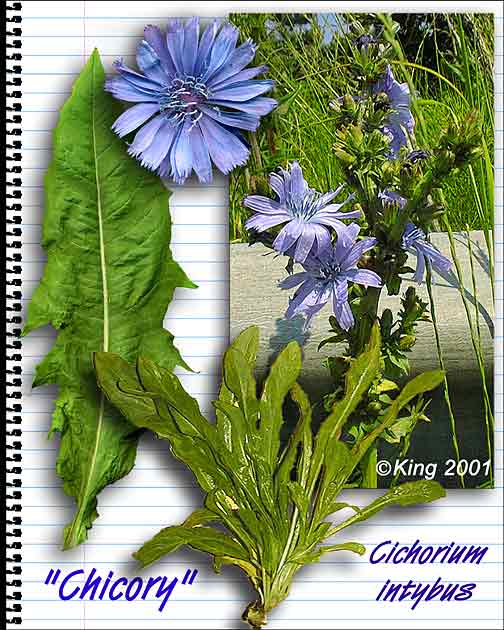


|
Good food, eaten by tortoises in the wild, and like dandelion, high in calcium and beta-carotene. Like mallow though, it can act like a sponge to nitrogen when grown on artificially enriched soil, and so should be grown on plain unfertilized soil only. From PFAF: Leaves (Dry weight) Water: 0, Calories: 290, Protein: 24.6, Fat: 2.9, Carbohydrate: 59.4, Fibre: 13, Ash: 13, Calcium: 1145, Iron: 24.6, VitaminA: 23, Thiamine: 1.01, Riboflavin: 1.74, Niacin: 5.8, VitaminC: 159
Although a perennial, chicory is usually cultivated
as an annual crop, especially when being grown as a winter salad. The
winter salad cultivars are usually sown in early summer to make sure
that they do not flower in their first year of growth. By late autumn
they have formed an overwintering rosette of leaves rather like a
cabbage. These leaves can be harvested as required during the winter and
the plants will then usually make some new growth (as long as the winter
is not too cold) that can be harvested in late winter or early spring.
The plants run to flower in the following summer and fail to make an
overwintering rosette of leaves for that winter. Seed - sow the wild form or cultivars being grown for their roots in May or June in situ. Cultivars being grown for their edible leaves can be sown in April for a summer crop or in June/July for a winter crop. Sow them in situ or in pots and then plant them out as soon as they are large enough. |
Back to Edible Wild Plants list (free download of illustrations available)
All graphics and text in this site © L King 1998-2015